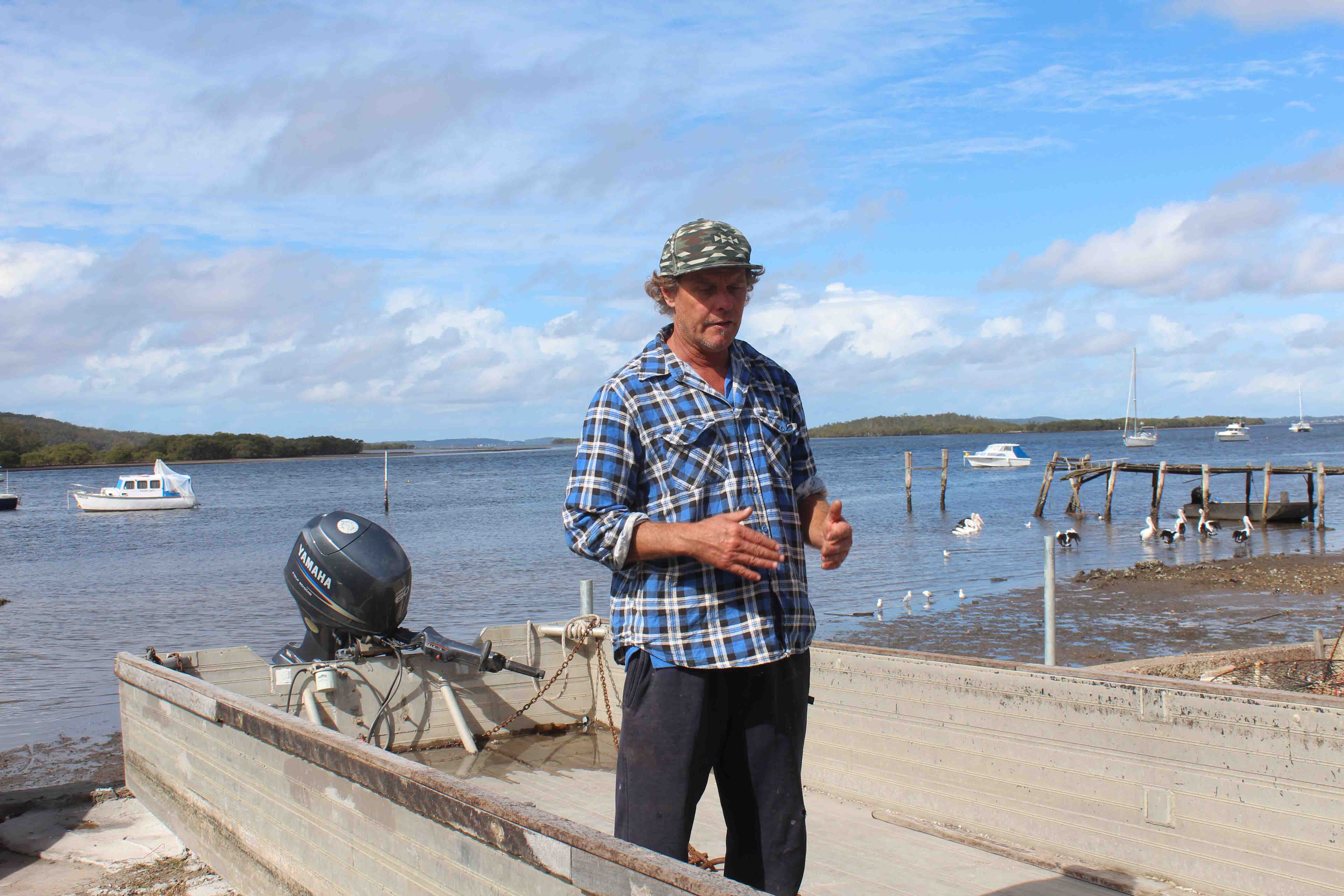The humble oyster has been an important part of our economy for over 120 years. The first lease was granted in 1876 to a Mr Peter James who paid 150 pounds a year for the entire Nelson Bay area.

Post WW1 saw a growth in the industry from the early 1920’s when the potential of the area was realised.
A man with first-hand knowledge of the industry is local oyster farmer Mark Hunter.
Mark is a fourth generation oyster farmer having followed in the footsteps of his Father, Grandfather and Great Grandfather.
Having spent his childhood helping in the family business Mark has a lifetime of experience living through the highs and lows of a very labour intensive industry.
“In the 1980’s there were around ninety oyster farmers in Port Stephens, I have seen that number decline to the current thirty five farmers today,” Mark said.
“After the demise of the Pacific Oyster, the region now only grows the Native Rock Oyster which takes three to four years to grow to harvest size.”
Prior to this approximately one third to one half of the crop were the Pacific Oyster due to its rapid growth rates and size.
Initially the Pacific Oyster was a Grade Two Noxious Fish but farmers were given the rights to farm them in Port Stephens in 1990.
The mix of the two species gave farmers added income with the fast growing Pacific Oyster until some three years ago when the entire crop was decimated by a still unknown disease.
This event put many farmers out of business and left those still operating with a large deficit in their incomes.
Mark said, “The coming harvest season will be the first in quite a few years where we will have a full harvest again.”
“This has been a catch up period with many of us struggling to keep going.”
And then the storm: “Just look around out the front here (Karuah oyster precinct) and the damage is evident with the jetties destroyed and some oyster punts on the bottom.”
Mark added, “But that is not all, with a lot of damage to leases and their structures, it will take weeks to fix and get back on track.”
Oyster growers expect to lose one third of the crop over the life of an oyster and part of this is due to the enemies of the oyster, mud worms, flatworms and heat kill which is a danger in the summer low tides.
As part of his work, Mark works on behalf of the local oyster growers and the Food Authority by taking water samples in the various nursery and harvest areas.
Through this weekly sampling the water quality and meat of the oysters are monitored to check for salinity levels, Ecoli, toxic algae and toxin levels.”
“The Food Authority under the Shellfish Program tests all samples and provides the results back to the growers enabling us to ensure public safety and giving the consumer confidence in our product.”
Mark is currently in the process of getting a DA for a new shed with a sales area on site at Barclay Street.
